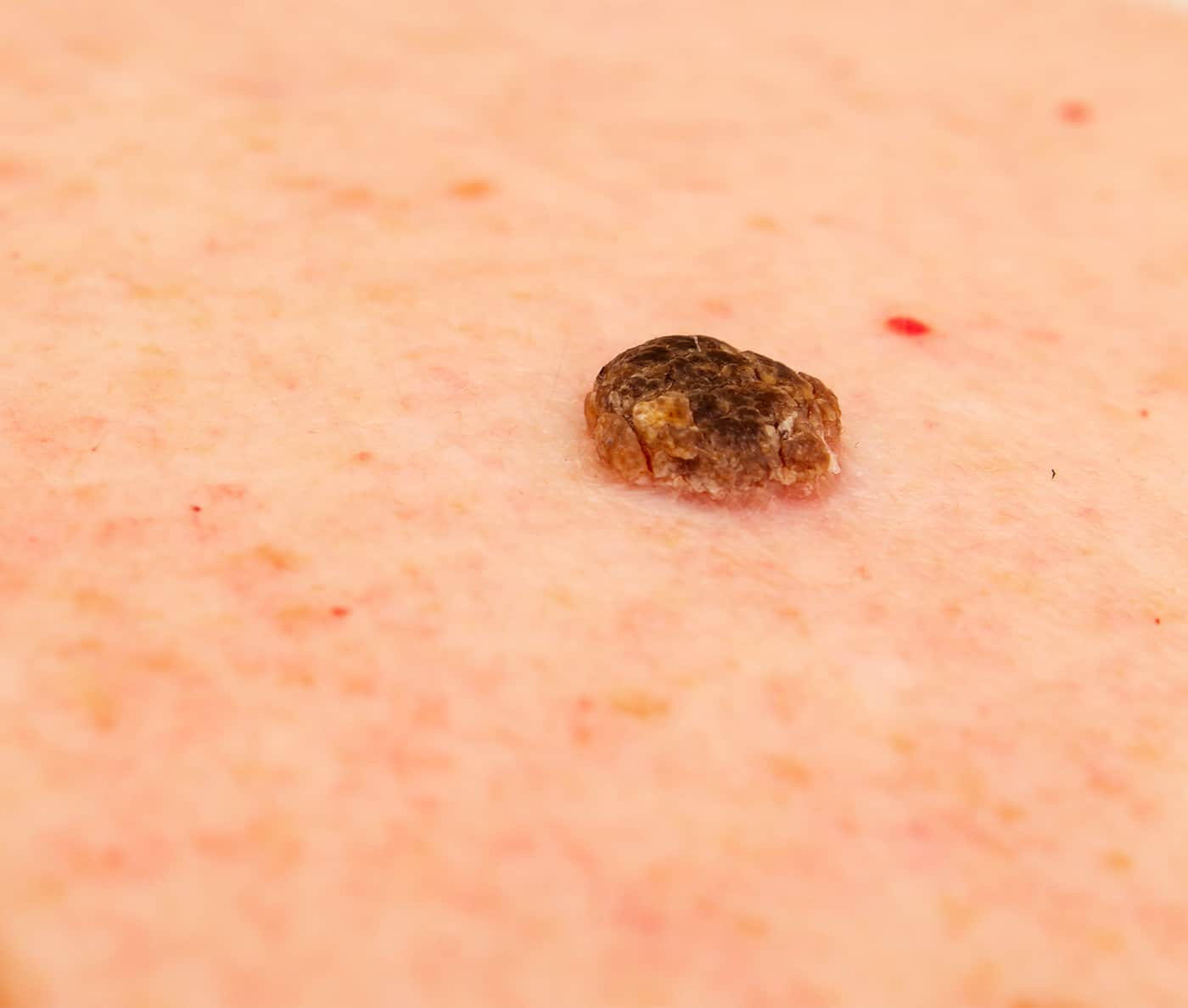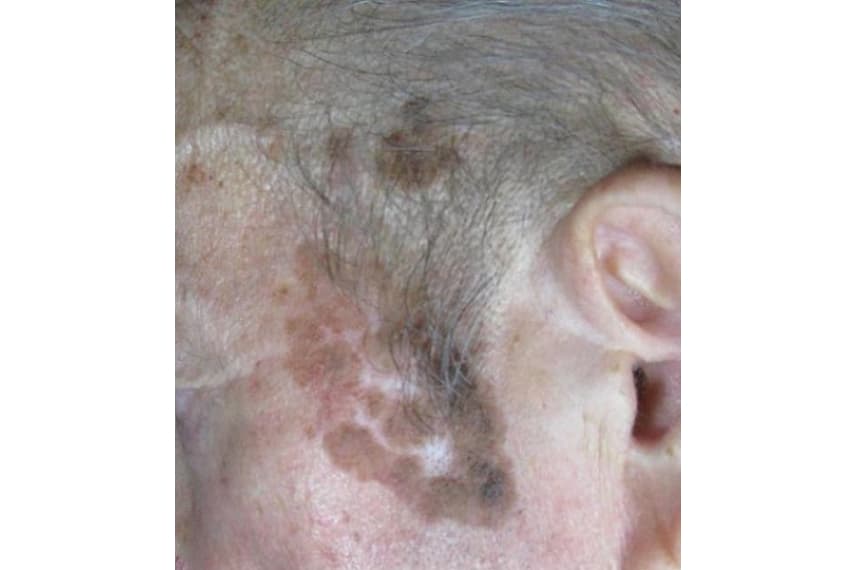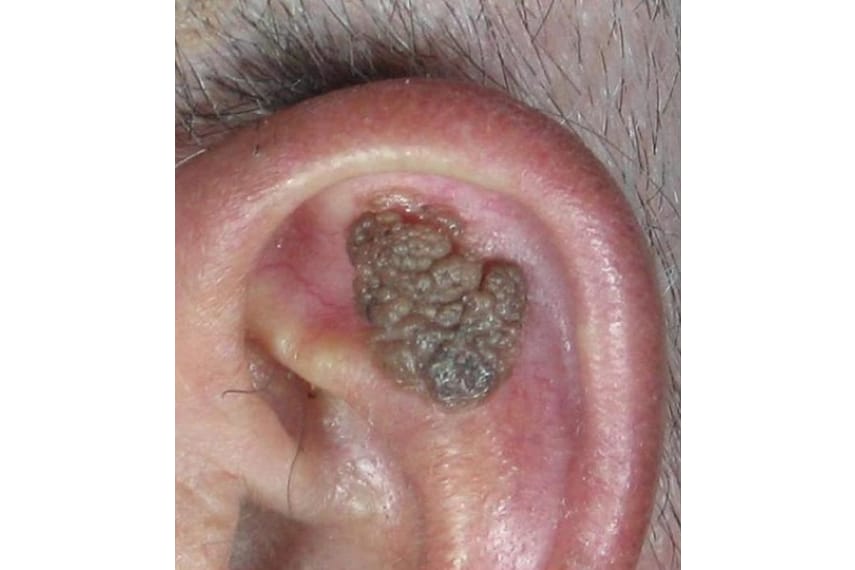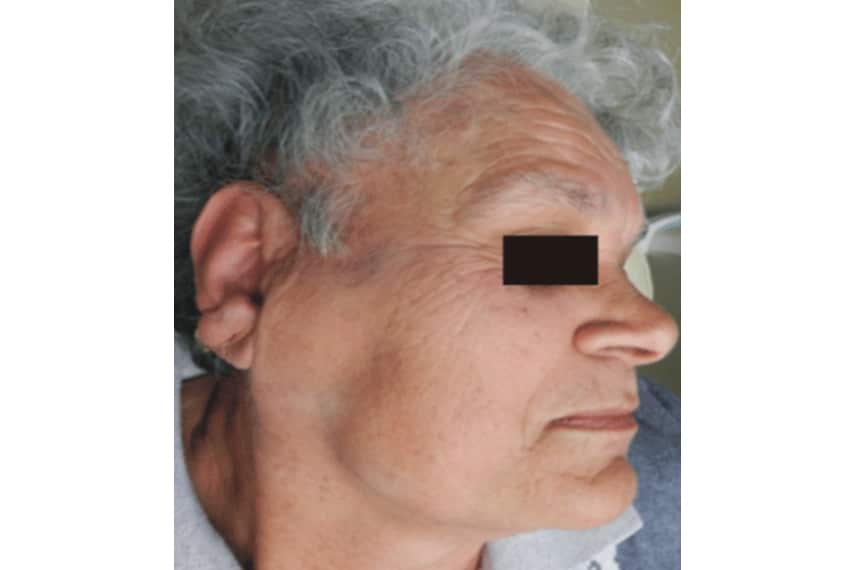Keratosis is a skin condition manifested by excessive growth of the stratum corneum, the most superficial part of the epidermis composed mainly of keratin . Keratin is a protein produced by keratinocytes, specific skin cells. Keratosis generally encompasses all disorders of the skin that exhibit growths of the stratum corneum, resulting from various etiologies and characteristic lesions. Several forms of keratoses exist, the most common being actinic keratosis and seborrheic keratosis.
Seborrheic keratosis is the most common form of benign epithelial tumour : seborrheic keratosis never progresses to skin cancer , it is not a precancerous lesion.
It takes the form of a crust or a spot well limited and in relief compared to the cutaneous surface and is painless to the touch. Over time, seborrheic keratosis lesions tend to thicken and increase in size.
Seborrheic keratosis affects seborrheic areas, that is to say areas rich in sebum , either on the face, décolleté or back. The mucous membranes, palms and soles of the limbs are spared. Areas of chafing , such as under the bra or at the neck, are prone to seborrheic keratosis.










